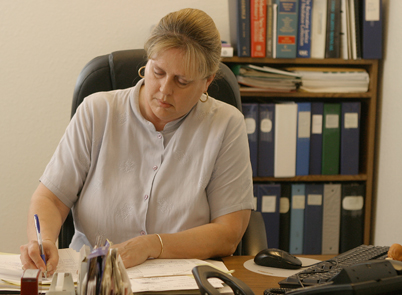
Domestic violence a challenge in court system
Domestic violence law is constantly evolving to provide more
protection to victims. Over the decades, arrests of abusers has
become mandatory in California and other states. Restraining orders
are easier to get. Bail for domestic violence is higher. But for
the court system charged with protecting victims, the complexity of
domestic violence leaves many gray areas.
Second in an occasional series
Domestic violence a challenge in court system
Domestic violence law is constantly evolving to provide more protection to victims. Over the decades, arrests of abusers has become mandatory in California and other states. Restraining orders are easier to get. Bail for domestic violence is higher. But for the court system charged with protecting victims, the complexity of domestic violence leaves many gray areas.
“The biggest challenge is the victim – trying to be compassionate to the victims’ and witnesses’ desires, yet have the batterer punished for their acts,” said Candace Hooper, the recently elected San Benito County District Attorney.
The complex emotional ties make it hard for prosecutors to rely on victims’ testimony against abusers.
“In the cycle of domestic violence, this is the honeymoon period,” Hooper said. “The victims want their families back or they need his [or her] income. Those are considerations.”
After an arrest is made, the district attorney’s office weighs the factors involved in the case. The extent of the injuries and history of the abuse determines whether a misdemeanor or a felony is charged. If the couple is living together, lived together in the past or has children, they are charged with domestic violence. Cases that don’t meet those criteria can be charged as battery.
Recanting victims are not rare in domestic violence cases, Hooper said.
“In one trial a lady testifying for a domestic violence case told exactly what had happened,” Hooper said. “Then she looked at [the abuser] and said, ‘I love you, baby.'”
State law now requires anyone charged with domestic violence to undergo a 52-week counseling program.
“For me, the goal is to stop the abuse, whether through incarceration or a domestic violence counseling program,” Hooper said. “Hopefully it gives them the tools not to have the same situation.”
Since the 1980s, state law has been changing to better protect victims of domestic violence.
“It was really during the O.J. Simpson trial that people became aware of it,” Hooper said. “That’s when things started changing.”
Since the famous trial where a former pro football player was charged with murdering his wife – and was found not guilty – awareness of domestic violence has increased.
Katie Fancher, the program coordinator for San Benito’s Victim/Witness Assistance Center, agrees that the Simpson trial was a catalyst for changing views on domestic violence.
In the past, law enforcement officers dealt with domestic violence calls by removing the victim from the home.
“They didn’t have any money. The kids didn’t have coats or shoes,” Fancher said. “They were completely at the mercy of someone else while [the abuser] stayed in the home. Why should they be? [The abuser] won again because its about power and control.”
Since then, laws have been passed that require law enforcement officers to make an arrest if there are signs of battery. Officers can also provide a temporary restraining order to protect the victim and hand out cards with information on how to contact the victim/witness office.
The victim/witness assistance center received 231 calls or visits from victims of domestic violence in 2005-2006 – nearly half of all victims it dealt with.
Fancher’s office explains court proceedings to victims, from bail to arraignment to restraining orders.
Changes to the bail scale allow the court system to require high bail in domestic violence cases. In some cases, it has been set as high as $50,000, Fancher said.
In the past, requesting a permanent restraining order required multiple forms, some complicated for those unfamiliar with the law. Now at arraignment, judges automatically issue a protective order that requires a suspect to stay 100 yards away from the victim or the victim’s house.
In some cases, the victim may request a “peaceful contact” order that will allow the abuser to return home, but judges rarely grant those, Hooper said.
“If he wants to see the kids, now he needs to go to a [court] facilitator,” Fancher said.
Court facilitators, or mediators, help families work through custody disputes or divorces.
For those families that decide to separate – few in number – San Benito’s Family Court Services must protect the victim while doing what is in the best interest of the children. In cases where domestic violence has occurred, family court services will see parents separately for mediation.
“As far as civil [court], it’s the constant struggle to protect the victim. That is at odds with promoting the best interest of the children,” said Frances Henderson, a court facilitator for Family Court Services. “The [abuser] is told they can’t have physical contact with the victim, but they have to see their children.”
The courts are not the only agencies dealing with domestic violence. In 2005, San Benito created a committee on domestic violence to bring together a multitude of services. Members of the committee represent government, law enforcement, nonprofits and other agencies that deal with domestic violence.
“It really helped in coordinating services,” Fancher said. “It’s a coordinated effort.”
Related Stories
The ‘Most Dangerous’ police work – police response to domestic violence calls
Help available for abused women – community resources for domestic violence
RESOURCES:
SBC Victim/Witness Assistance Center – 831-634-1397
Family Court Services – 831-636-4425
For more information on local resources, visit www.sanbenito.courts.ca.gov/domestic_violence.htm









